#The Challenges of Organizing an Insurrection
Explore tagged Tumblr posts
Photo
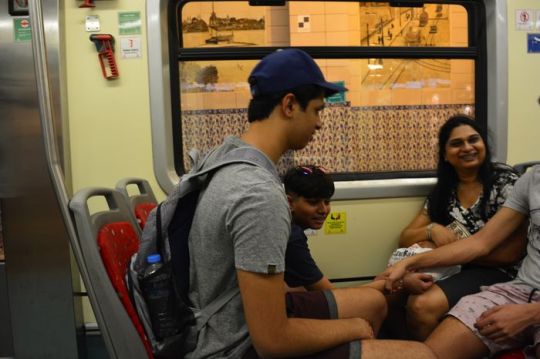
The Challenges of Organizing an Insurrection
Inadequate Organization of the Bucharest Committee
The events surrounding the attempted insurrection reveal significant challenges in organization and leadership. The rising occurred only in a few places and lacked coordination, suggesting that the Bucharest Committee was inexperienced and poorly organized. Their attempt to incite a widespread revolt failed as the majority of the population remained passive, resulting in devastating consequences.
Misguided Attempts at Provocation
The Bucharest Committee’s strategy relied on persuading a handful of villages to rise up, hoping that it would spark a general insurrection across the country. However, without proper leadership and organization, the rest of the population remained inactive, leading to their quiet slaughter. This lack of unified action and leadership proved detrimental to the success of the uprising.
Potential for Success with Proper Organization
Had the uprising been properly organized with widespread participation and effective leadership, the outcome could have been different. A well-coordinated revolt could have forced the Turks to retreat from significant portions of the country, particularly north of the Balkans. The inability to effectively combat resistance while maintaining communication lines through hostile territory would have severely weakened Turkish control Bulgaria Tours.
Panagurishti’s Involvement in the Revolt
The enthusiasm for revolt was evident in Panagurishti, where even women participated in fortification efforts. However, the amateur fortifications they constructed were inadequate for defense against significant military opposition. These makeshift defenses lacked depth and strategic placement, rendering them ineffective in repelling any serious assault.
Ineffectiveness of the Fortifications
The fortifications in Panagurishti consisted of shallow embankments and ditches, which would have provided minimal protection against enemy attacks. Even if well-constructed, the village’s accessibility from all sides would have rendered the defenses easily flanked and bypassed by enemy forces. Thus, the efforts to fortify the village, while demonstrating enthusiasm, ultimately proved futile in providing meaningful defense.
The attempted insurrection highlighted the challenges of organizing a successful revolt. Inexperienced leadership, inadequate organization, and ineffective fortifications hindered the efforts to incite widespread rebellion. While enthusiasm and willingness to resist were present, they were not enough to overcome the lack of proper planning and leadership required for a successful uprising.
0 notes
Photo
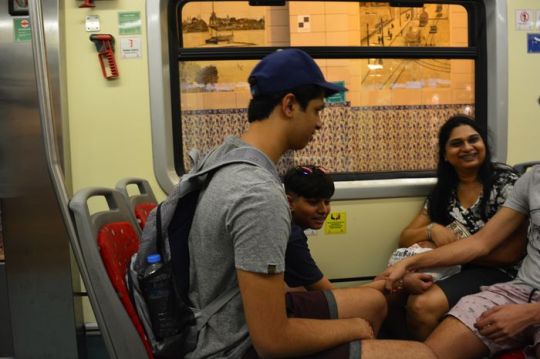
The Challenges of Organizing an Insurrection
Inadequate Organization of the Bucharest Committee
The events surrounding the attempted insurrection reveal significant challenges in organization and leadership. The rising occurred only in a few places and lacked coordination, suggesting that the Bucharest Committee was inexperienced and poorly organized. Their attempt to incite a widespread revolt failed as the majority of the population remained passive, resulting in devastating consequences.
Misguided Attempts at Provocation
The Bucharest Committee’s strategy relied on persuading a handful of villages to rise up, hoping that it would spark a general insurrection across the country. However, without proper leadership and organization, the rest of the population remained inactive, leading to their quiet slaughter. This lack of unified action and leadership proved detrimental to the success of the uprising.
Potential for Success with Proper Organization
Had the uprising been properly organized with widespread participation and effective leadership, the outcome could have been different. A well-coordinated revolt could have forced the Turks to retreat from significant portions of the country, particularly north of the Balkans. The inability to effectively combat resistance while maintaining communication lines through hostile territory would have severely weakened Turkish control Bulgaria Tours.
Panagurishti’s Involvement in the Revolt
The enthusiasm for revolt was evident in Panagurishti, where even women participated in fortification efforts. However, the amateur fortifications they constructed were inadequate for defense against significant military opposition. These makeshift defenses lacked depth and strategic placement, rendering them ineffective in repelling any serious assault.
Ineffectiveness of the Fortifications
The fortifications in Panagurishti consisted of shallow embankments and ditches, which would have provided minimal protection against enemy attacks. Even if well-constructed, the village’s accessibility from all sides would have rendered the defenses easily flanked and bypassed by enemy forces. Thus, the efforts to fortify the village, while demonstrating enthusiasm, ultimately proved futile in providing meaningful defense.
The attempted insurrection highlighted the challenges of organizing a successful revolt. Inexperienced leadership, inadequate organization, and ineffective fortifications hindered the efforts to incite widespread rebellion. While enthusiasm and willingness to resist were present, they were not enough to overcome the lack of proper planning and leadership required for a successful uprising.
0 notes
Photo
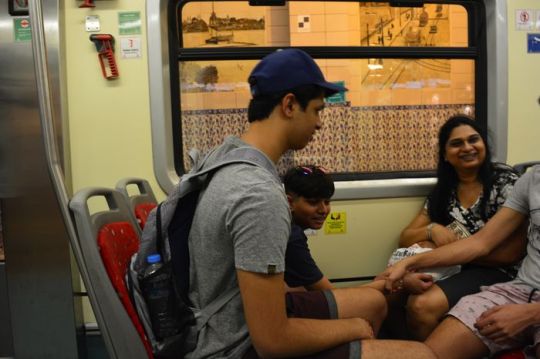
The Challenges of Organizing an Insurrection
Inadequate Organization of the Bucharest Committee
The events surrounding the attempted insurrection reveal significant challenges in organization and leadership. The rising occurred only in a few places and lacked coordination, suggesting that the Bucharest Committee was inexperienced and poorly organized. Their attempt to incite a widespread revolt failed as the majority of the population remained passive, resulting in devastating consequences.
Misguided Attempts at Provocation
The Bucharest Committee’s strategy relied on persuading a handful of villages to rise up, hoping that it would spark a general insurrection across the country. However, without proper leadership and organization, the rest of the population remained inactive, leading to their quiet slaughter. This lack of unified action and leadership proved detrimental to the success of the uprising.
Potential for Success with Proper Organization
Had the uprising been properly organized with widespread participation and effective leadership, the outcome could have been different. A well-coordinated revolt could have forced the Turks to retreat from significant portions of the country, particularly north of the Balkans. The inability to effectively combat resistance while maintaining communication lines through hostile territory would have severely weakened Turkish control Bulgaria Tours.
Panagurishti’s Involvement in the Revolt
The enthusiasm for revolt was evident in Panagurishti, where even women participated in fortification efforts. However, the amateur fortifications they constructed were inadequate for defense against significant military opposition. These makeshift defenses lacked depth and strategic placement, rendering them ineffective in repelling any serious assault.
Ineffectiveness of the Fortifications
The fortifications in Panagurishti consisted of shallow embankments and ditches, which would have provided minimal protection against enemy attacks. Even if well-constructed, the village’s accessibility from all sides would have rendered the defenses easily flanked and bypassed by enemy forces. Thus, the efforts to fortify the village, while demonstrating enthusiasm, ultimately proved futile in providing meaningful defense.
The attempted insurrection highlighted the challenges of organizing a successful revolt. Inexperienced leadership, inadequate organization, and ineffective fortifications hindered the efforts to incite widespread rebellion. While enthusiasm and willingness to resist were present, they were not enough to overcome the lack of proper planning and leadership required for a successful uprising.
0 notes
Photo

The Challenges of Organizing an Insurrection
Inadequate Organization of the Bucharest Committee
The events surrounding the attempted insurrection reveal significant challenges in organization and leadership. The rising occurred only in a few places and lacked coordination, suggesting that the Bucharest Committee was inexperienced and poorly organized. Their attempt to incite a widespread revolt failed as the majority of the population remained passive, resulting in devastating consequences.
Misguided Attempts at Provocation
The Bucharest Committee’s strategy relied on persuading a handful of villages to rise up, hoping that it would spark a general insurrection across the country. However, without proper leadership and organization, the rest of the population remained inactive, leading to their quiet slaughter. This lack of unified action and leadership proved detrimental to the success of the uprising.
Potential for Success with Proper Organization
Had the uprising been properly organized with widespread participation and effective leadership, the outcome could have been different. A well-coordinated revolt could have forced the Turks to retreat from significant portions of the country, particularly north of the Balkans. The inability to effectively combat resistance while maintaining communication lines through hostile territory would have severely weakened Turkish control Bulgaria Tours.
Panagurishti’s Involvement in the Revolt
The enthusiasm for revolt was evident in Panagurishti, where even women participated in fortification efforts. However, the amateur fortifications they constructed were inadequate for defense against significant military opposition. These makeshift defenses lacked depth and strategic placement, rendering them ineffective in repelling any serious assault.
Ineffectiveness of the Fortifications
The fortifications in Panagurishti consisted of shallow embankments and ditches, which would have provided minimal protection against enemy attacks. Even if well-constructed, the village’s accessibility from all sides would have rendered the defenses easily flanked and bypassed by enemy forces. Thus, the efforts to fortify the village, while demonstrating enthusiasm, ultimately proved futile in providing meaningful defense.
The attempted insurrection highlighted the challenges of organizing a successful revolt. Inexperienced leadership, inadequate organization, and ineffective fortifications hindered the efforts to incite widespread rebellion. While enthusiasm and willingness to resist were present, they were not enough to overcome the lack of proper planning and leadership required for a successful uprising.
0 notes
Photo

The Challenges of Organizing an Insurrection
Inadequate Organization of the Bucharest Committee
The events surrounding the attempted insurrection reveal significant challenges in organization and leadership. The rising occurred only in a few places and lacked coordination, suggesting that the Bucharest Committee was inexperienced and poorly organized. Their attempt to incite a widespread revolt failed as the majority of the population remained passive, resulting in devastating consequences.
Misguided Attempts at Provocation
The Bucharest Committee’s strategy relied on persuading a handful of villages to rise up, hoping that it would spark a general insurrection across the country. However, without proper leadership and organization, the rest of the population remained inactive, leading to their quiet slaughter. This lack of unified action and leadership proved detrimental to the success of the uprising.
Potential for Success with Proper Organization
Had the uprising been properly organized with widespread participation and effective leadership, the outcome could have been different. A well-coordinated revolt could have forced the Turks to retreat from significant portions of the country, particularly north of the Balkans. The inability to effectively combat resistance while maintaining communication lines through hostile territory would have severely weakened Turkish control Bulgaria Tours.
Panagurishti’s Involvement in the Revolt
The enthusiasm for revolt was evident in Panagurishti, where even women participated in fortification efforts. However, the amateur fortifications they constructed were inadequate for defense against significant military opposition. These makeshift defenses lacked depth and strategic placement, rendering them ineffective in repelling any serious assault.
Ineffectiveness of the Fortifications
The fortifications in Panagurishti consisted of shallow embankments and ditches, which would have provided minimal protection against enemy attacks. Even if well-constructed, the village’s accessibility from all sides would have rendered the defenses easily flanked and bypassed by enemy forces. Thus, the efforts to fortify the village, while demonstrating enthusiasm, ultimately proved futile in providing meaningful defense.
The attempted insurrection highlighted the challenges of organizing a successful revolt. Inexperienced leadership, inadequate organization, and ineffective fortifications hindered the efforts to incite widespread rebellion. While enthusiasm and willingness to resist were present, they were not enough to overcome the lack of proper planning and leadership required for a successful uprising.
0 notes
Photo
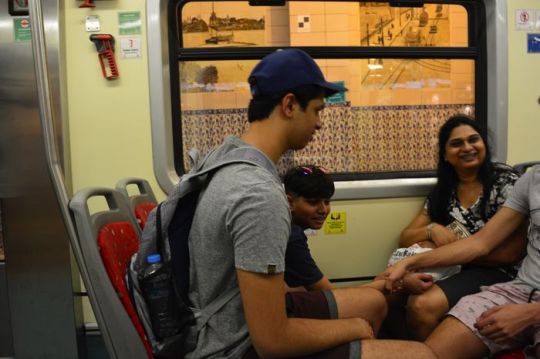
The Challenges of Organizing an Insurrection
Inadequate Organization of the Bucharest Committee
The events surrounding the attempted insurrection reveal significant challenges in organization and leadership. The rising occurred only in a few places and lacked coordination, suggesting that the Bucharest Committee was inexperienced and poorly organized. Their attempt to incite a widespread revolt failed as the majority of the population remained passive, resulting in devastating consequences.
Misguided Attempts at Provocation
The Bucharest Committee’s strategy relied on persuading a handful of villages to rise up, hoping that it would spark a general insurrection across the country. However, without proper leadership and organization, the rest of the population remained inactive, leading to their quiet slaughter. This lack of unified action and leadership proved detrimental to the success of the uprising.
Potential for Success with Proper Organization
Had the uprising been properly organized with widespread participation and effective leadership, the outcome could have been different. A well-coordinated revolt could have forced the Turks to retreat from significant portions of the country, particularly north of the Balkans. The inability to effectively combat resistance while maintaining communication lines through hostile territory would have severely weakened Turkish control Bulgaria Tours.
Panagurishti’s Involvement in the Revolt
The enthusiasm for revolt was evident in Panagurishti, where even women participated in fortification efforts. However, the amateur fortifications they constructed were inadequate for defense against significant military opposition. These makeshift defenses lacked depth and strategic placement, rendering them ineffective in repelling any serious assault.
Ineffectiveness of the Fortifications
The fortifications in Panagurishti consisted of shallow embankments and ditches, which would have provided minimal protection against enemy attacks. Even if well-constructed, the village’s accessibility from all sides would have rendered the defenses easily flanked and bypassed by enemy forces. Thus, the efforts to fortify the village, while demonstrating enthusiasm, ultimately proved futile in providing meaningful defense.
The attempted insurrection highlighted the challenges of organizing a successful revolt. Inexperienced leadership, inadequate organization, and ineffective fortifications hindered the efforts to incite widespread rebellion. While enthusiasm and willingness to resist were present, they were not enough to overcome the lack of proper planning and leadership required for a successful uprising.
0 notes
Photo
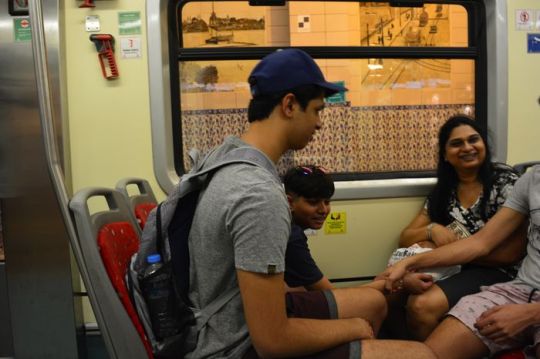
The Challenges of Organizing an Insurrection
Inadequate Organization of the Bucharest Committee
The events surrounding the attempted insurrection reveal significant challenges in organization and leadership. The rising occurred only in a few places and lacked coordination, suggesting that the Bucharest Committee was inexperienced and poorly organized. Their attempt to incite a widespread revolt failed as the majority of the population remained passive, resulting in devastating consequences.
Misguided Attempts at Provocation
The Bucharest Committee’s strategy relied on persuading a handful of villages to rise up, hoping that it would spark a general insurrection across the country. However, without proper leadership and organization, the rest of the population remained inactive, leading to their quiet slaughter. This lack of unified action and leadership proved detrimental to the success of the uprising.
Potential for Success with Proper Organization
Had the uprising been properly organized with widespread participation and effective leadership, the outcome could have been different. A well-coordinated revolt could have forced the Turks to retreat from significant portions of the country, particularly north of the Balkans. The inability to effectively combat resistance while maintaining communication lines through hostile territory would have severely weakened Turkish control Bulgaria Tours.
Panagurishti’s Involvement in the Revolt
The enthusiasm for revolt was evident in Panagurishti, where even women participated in fortification efforts. However, the amateur fortifications they constructed were inadequate for defense against significant military opposition. These makeshift defenses lacked depth and strategic placement, rendering them ineffective in repelling any serious assault.
Ineffectiveness of the Fortifications
The fortifications in Panagurishti consisted of shallow embankments and ditches, which would have provided minimal protection against enemy attacks. Even if well-constructed, the village’s accessibility from all sides would have rendered the defenses easily flanked and bypassed by enemy forces. Thus, the efforts to fortify the village, while demonstrating enthusiasm, ultimately proved futile in providing meaningful defense.
The attempted insurrection highlighted the challenges of organizing a successful revolt. Inexperienced leadership, inadequate organization, and ineffective fortifications hindered the efforts to incite widespread rebellion. While enthusiasm and willingness to resist were present, they were not enough to overcome the lack of proper planning and leadership required for a successful uprising.
0 notes
Photo
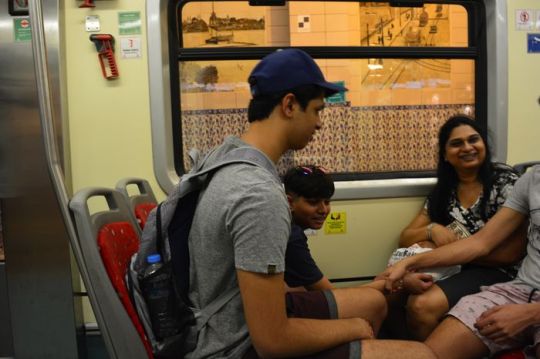
The Challenges of Organizing an Insurrection
Inadequate Organization of the Bucharest Committee
The events surrounding the attempted insurrection reveal significant challenges in organization and leadership. The rising occurred only in a few places and lacked coordination, suggesting that the Bucharest Committee was inexperienced and poorly organized. Their attempt to incite a widespread revolt failed as the majority of the population remained passive, resulting in devastating consequences.
Misguided Attempts at Provocation
The Bucharest Committee’s strategy relied on persuading a handful of villages to rise up, hoping that it would spark a general insurrection across the country. However, without proper leadership and organization, the rest of the population remained inactive, leading to their quiet slaughter. This lack of unified action and leadership proved detrimental to the success of the uprising.
Potential for Success with Proper Organization
Had the uprising been properly organized with widespread participation and effective leadership, the outcome could have been different. A well-coordinated revolt could have forced the Turks to retreat from significant portions of the country, particularly north of the Balkans. The inability to effectively combat resistance while maintaining communication lines through hostile territory would have severely weakened Turkish control Bulgaria Tours.
Panagurishti’s Involvement in the Revolt
The enthusiasm for revolt was evident in Panagurishti, where even women participated in fortification efforts. However, the amateur fortifications they constructed were inadequate for defense against significant military opposition. These makeshift defenses lacked depth and strategic placement, rendering them ineffective in repelling any serious assault.
Ineffectiveness of the Fortifications
The fortifications in Panagurishti consisted of shallow embankments and ditches, which would have provided minimal protection against enemy attacks. Even if well-constructed, the village’s accessibility from all sides would have rendered the defenses easily flanked and bypassed by enemy forces. Thus, the efforts to fortify the village, while demonstrating enthusiasm, ultimately proved futile in providing meaningful defense.
The attempted insurrection highlighted the challenges of organizing a successful revolt. Inexperienced leadership, inadequate organization, and ineffective fortifications hindered the efforts to incite widespread rebellion. While enthusiasm and willingness to resist were present, they were not enough to overcome the lack of proper planning and leadership required for a successful uprising.
0 notes
Photo
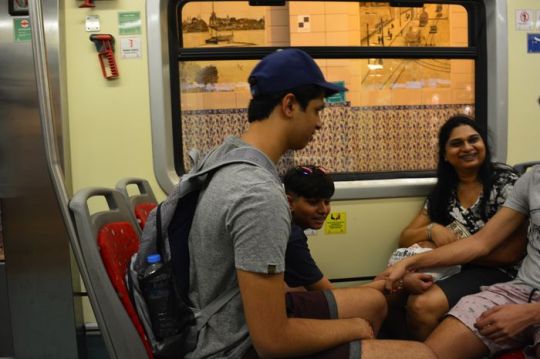
The Challenges of Organizing an Insurrection
Inadequate Organization of the Bucharest Committee
The events surrounding the attempted insurrection reveal significant challenges in organization and leadership. The rising occurred only in a few places and lacked coordination, suggesting that the Bucharest Committee was inexperienced and poorly organized. Their attempt to incite a widespread revolt failed as the majority of the population remained passive, resulting in devastating consequences.
Misguided Attempts at Provocation
The Bucharest Committee’s strategy relied on persuading a handful of villages to rise up, hoping that it would spark a general insurrection across the country. However, without proper leadership and organization, the rest of the population remained inactive, leading to their quiet slaughter. This lack of unified action and leadership proved detrimental to the success of the uprising.
Potential for Success with Proper Organization
Had the uprising been properly organized with widespread participation and effective leadership, the outcome could have been different. A well-coordinated revolt could have forced the Turks to retreat from significant portions of the country, particularly north of the Balkans. The inability to effectively combat resistance while maintaining communication lines through hostile territory would have severely weakened Turkish control Bulgaria Tours.
Panagurishti’s Involvement in the Revolt
The enthusiasm for revolt was evident in Panagurishti, where even women participated in fortification efforts. However, the amateur fortifications they constructed were inadequate for defense against significant military opposition. These makeshift defenses lacked depth and strategic placement, rendering them ineffective in repelling any serious assault.
Ineffectiveness of the Fortifications
The fortifications in Panagurishti consisted of shallow embankments and ditches, which would have provided minimal protection against enemy attacks. Even if well-constructed, the village’s accessibility from all sides would have rendered the defenses easily flanked and bypassed by enemy forces. Thus, the efforts to fortify the village, while demonstrating enthusiasm, ultimately proved futile in providing meaningful defense.
The attempted insurrection highlighted the challenges of organizing a successful revolt. Inexperienced leadership, inadequate organization, and ineffective fortifications hindered the efforts to incite widespread rebellion. While enthusiasm and willingness to resist were present, they were not enough to overcome the lack of proper planning and leadership required for a successful uprising.
0 notes
Photo
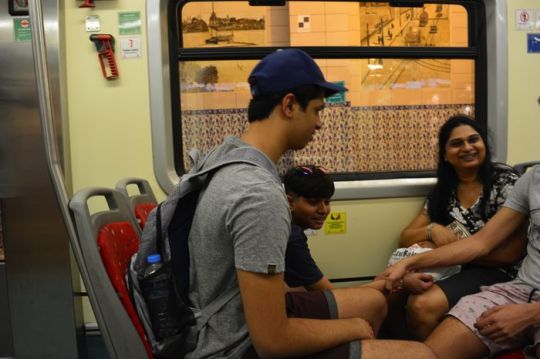
The Challenges of Organizing an Insurrection
Inadequate Organization of the Bucharest Committee
The events surrounding the attempted insurrection reveal significant challenges in organization and leadership. The rising occurred only in a few places and lacked coordination, suggesting that the Bucharest Committee was inexperienced and poorly organized. Their attempt to incite a widespread revolt failed as the majority of the population remained passive, resulting in devastating consequences.
Misguided Attempts at Provocation
The Bucharest Committee’s strategy relied on persuading a handful of villages to rise up, hoping that it would spark a general insurrection across the country. However, without proper leadership and organization, the rest of the population remained inactive, leading to their quiet slaughter. This lack of unified action and leadership proved detrimental to the success of the uprising.
Potential for Success with Proper Organization
Had the uprising been properly organized with widespread participation and effective leadership, the outcome could have been different. A well-coordinated revolt could have forced the Turks to retreat from significant portions of the country, particularly north of the Balkans. The inability to effectively combat resistance while maintaining communication lines through hostile territory would have severely weakened Turkish control Bulgaria Tours.
Panagurishti’s Involvement in the Revolt
The enthusiasm for revolt was evident in Panagurishti, where even women participated in fortification efforts. However, the amateur fortifications they constructed were inadequate for defense against significant military opposition. These makeshift defenses lacked depth and strategic placement, rendering them ineffective in repelling any serious assault.
Ineffectiveness of the Fortifications
The fortifications in Panagurishti consisted of shallow embankments and ditches, which would have provided minimal protection against enemy attacks. Even if well-constructed, the village’s accessibility from all sides would have rendered the defenses easily flanked and bypassed by enemy forces. Thus, the efforts to fortify the village, while demonstrating enthusiasm, ultimately proved futile in providing meaningful defense.
The attempted insurrection highlighted the challenges of organizing a successful revolt. Inexperienced leadership, inadequate organization, and ineffective fortifications hindered the efforts to incite widespread rebellion. While enthusiasm and willingness to resist were present, they were not enough to overcome the lack of proper planning and leadership required for a successful uprising.
0 notes
Photo

The Challenges of Organizing an Insurrection
Inadequate Organization of the Bucharest Committee
The events surrounding the attempted insurrection reveal significant challenges in organization and leadership. The rising occurred only in a few places and lacked coordination, suggesting that the Bucharest Committee was inexperienced and poorly organized. Their attempt to incite a widespread revolt failed as the majority of the population remained passive, resulting in devastating consequences.
Misguided Attempts at Provocation
The Bucharest Committee’s strategy relied on persuading a handful of villages to rise up, hoping that it would spark a general insurrection across the country. However, without proper leadership and organization, the rest of the population remained inactive, leading to their quiet slaughter. This lack of unified action and leadership proved detrimental to the success of the uprising.
Potential for Success with Proper Organization
Had the uprising been properly organized with widespread participation and effective leadership, the outcome could have been different. A well-coordinated revolt could have forced the Turks to retreat from significant portions of the country, particularly north of the Balkans. The inability to effectively combat resistance while maintaining communication lines through hostile territory would have severely weakened Turkish control Bulgaria Tours.
Panagurishti’s Involvement in the Revolt
The enthusiasm for revolt was evident in Panagurishti, where even women participated in fortification efforts. However, the amateur fortifications they constructed were inadequate for defense against significant military opposition. These makeshift defenses lacked depth and strategic placement, rendering them ineffective in repelling any serious assault.
Ineffectiveness of the Fortifications
The fortifications in Panagurishti consisted of shallow embankments and ditches, which would have provided minimal protection against enemy attacks. Even if well-constructed, the village’s accessibility from all sides would have rendered the defenses easily flanked and bypassed by enemy forces. Thus, the efforts to fortify the village, while demonstrating enthusiasm, ultimately proved futile in providing meaningful defense.
The attempted insurrection highlighted the challenges of organizing a successful revolt. Inexperienced leadership, inadequate organization, and ineffective fortifications hindered the efforts to incite widespread rebellion. While enthusiasm and willingness to resist were present, they were not enough to overcome the lack of proper planning and leadership required for a successful uprising.
0 notes
Note
Sup Currently im writing a military themed story and I want to know some useful phrases and (maybe???) some links to useful thingies. I am wrapping my head around researching way too much but I dont want to make my writing unrealistic T-T So any advice for that?
Some Military Vocabulary
terminology and slang
Aide-de-camp - a member of the personal staff of a general officer, acting as his confidential assistant
Blue Falcon - Someone who betrays you (buddy f’er)
Clandestine - Military activities intended to be kept secret or concealed
Chamade - Drumbeat of surrender
Chest candy - Decorations or awards on an officer’s dress uniform
Dream sheet - Job and assignment preference worksheet for cadets
Élan - A high-spirited morale usually associated with exceptionally self-confident and elite units
Expectant - A soldier who is expected to die from their injuries
Feu de joie - French phrase meaning 'fire of joy' describing a firing of muskets one after another, closely timed to make a continuous noise, in celebration
Garrison - A a military post, especially one that is permanently established; the troops stationed at a military post
Ground zero - Point of origin for violent activity (such as where a bomb hits); specific point directly below explosion of a nuclear weapon
Hangfire - Wait for orders
Infantry - A branch of an army whose soldiers are organized, trained and equipped to fight on foot
Insurrection - The process of rising up to challenge one’s own government
Jeep - Soldier just out of basic training
Meat wagon - Ambulance
Mess hall - Hall where service members eat their meals
Moonbeam - Flashlight
NVD - Night Vision Device
Oxygen thief - Recruit who talks too much
Sky blossom - Parachute
Smoke - To punish a soldier excessively for a minor infraction
Soup sandwich - A situation that was poorly planned or has gone terribly wrong
WTHR - Weather
Zone of fire - A particular area where a unit delivers or is about to deliver fire
Some Military & Warfare Tropes
False Flag Operation: Attacking another nation and making it look like someone else did it.
Peeling Potatoes: The commanding officer makes subordinates peel potatoes when they get out of line.
Sealed Orders: Sensitive orders aren't relayed until the last moment to prevent intel leaks.
War Is Hell: The work depicts war in a negative light, such as emphasizing that people get killed in wars and demonstrating the trauma suffered by those forced to endure the bloodshed.
We Have Reserves: This particular military doesn't consider it a big deal to have soldiers die so long as replacements are easy to obtain.
Sources: 1 2 3 4 5 6 7 ⚜ More: Word Lists ⚜ Writing Resources PDFs
Here are some references, do go through the links because there are so many more interesting ones I wasn't able to include here. Finding that balance when researching a story can definitely be a challenge. As you write, I think one thing that could help is to keep in mind your target audience. Would the flow be disrupted by adding a certain detail? Would it be better just to exclude it? For instance, including jargon or terminology that your readers may not be familiar with, but might be necessary for your story/character. So find that balance to retain it but in a way that includes some sort of explanation for your reader (e.g., through another character or through the narrator). And here are some tips to help guide you with the tropes in this genre (and the genre, in general). Hope this helps with your writing!
Update. DOD Dictionary of Military and Associated Terms ⚜ Naval Abbreviations ⚜ YouTube Channel: Military-Related. Thank you to @anumberofhobbies for these additional references!
#on writing#writing tips#tropes#writeblr#writing advice#writers on tumblr#literature#writing reference#dark academia#spilled ink#writing prompt#creative writing#writing inspiration#writing ideas#light academia#writing resources
348 notes
·
View notes
Text
Jennifer Rubin at The Contrarian:
For several years, whenever Hillary Clinton appeared for an interview or commented on events on which she had particular expertise, she was greeted with howls from the punditocracy to essentially shut up and go away. Granted, she has been on the national stage since the 1990s, but frankly, Americans could have used more of her insight and advice on the deeds and misdeeds of President Trump over the years. Now, less than a week into the Trump orgy of unconstitutional power grabs, preposterous declarations (renaming the Gulf of Mexico might be the stupidest of the bunch) and the release of the Jan. 6 felons (some of whom were convicted of violent crimes), I sure would like to hear the voice of the other woman nominated to run for president. Many of us would welcome the clear, compelling voice of former Vice President Kamala Harris.
Democracy defenders anticipated that Democrats might be caught on their back feet, but when the Senate minority leader issues anodyne declarations so utterly inapt in the current climate, it’s time to look for a single charismatic voice, one well-versed in law and unafraid to trim her sails. (Sen. Chuck Schumer’s statement after a deeply dishonest, dark, dangerous inaugural address suggested he had not been listening closely: “It’s now time to look to the future. The challenges that face America are many and great. The Senate must respond with resolve, bipartisanship, and fidelity to the working and middle class of this country.”) Trump has launched a full-out assault on the Constitution and the rule of law. His gambits include: attempting to excise birthright citizenship from the 14th Amendment; undermining professional, competent governance with “Schedule F”; and—frighteningly—to move to militarize the border, invoke emergency powers, and grab the Alien & Sedition Act out of the 18th century. (As Ilya Somin explained about the latter, “[T]he Alien Enemies Act cannot be used in our current situation because we are not in a ‘declared war’ with any foreign nation, and there also is no ‘invasion’ or predatory incursion is perpetrated, attempted, or threatened against the territory of the United States by any foreign nation or government.’”)
Harris was the last administration’s most compelling advocate on a range of legal and public-safety issues, from the reversal of Roe v. Wade to the dangers of untrammeled executive power to anti-immigrant incitement. She showed Democrats how to be tough on the border without being cruel, reckless, and contemptuous of the Constitution. (At the Ellipse speech just before the election, she declared, “When I was attorney general of a border state, I saw the chaos and violence caused by transnational criminal organizations that I took on and when I am President, we will quickly remove those who arrive here unlawfully, prosecute the cartels and give border patrol the support they so desperately need.” However, she consistently reminded us we are a nation of immigrants.) She never minced words about Trump’s dictatorial ambitions. She did warn us less than two weeks before the election, “Donald Trump vowed to be a dictator on day one. He vowed to use the military to carry out personal and political vendettas. His former chief of staff said he wanted generals like Hitler’s. Trump wants unchecked power.” Given that she is a former prosecutor who boasted that she put violent criminals behind bars, I certainly would like to hear what she has to say about letting out of prison 1500 people convicted in association with the Jan. 6 insurrection (which resulted in the death of several police officers and serious injuries and trauma to scores of others).
[...] She was right about what Trump intended to do and the danger he posed to the rule of law. She was right about the Supreme Court. Though she certainly deserves a break, whenever she is prepared, given our political vacuum, no one is better positioned to summon democracy defenders to stand up to a lawless president than Kamala Harris.
Jennifer Rubin wrote in The Contrarian on why Kamala Harris should take her perch being the voice for the rule of law calling out Felon 47’s dictatorship.
America will regret picking the Constitution-pissing felon over the prosecutor.
68 notes
·
View notes
Text
Some thoughts about PADDs
I had a thought that began with this scene from Lower Decks.

T'Lyn just...tosses it out the window, the modern day equivalent would be to chuck my phone out of a car to delete a google doc.
Its obvious that PADD were designed 24th century visual metaphor for presenting hard copy information between characters, like envelopes or reports, or ancient scrolls in period dramas.
Because they were fictional, the user processes hadn't yet been developed (TNG premiered in 1987, iPhone first release in 2007, iPad in 2010). Nobody knew to forward files from one device to another; if you notice, in TNG/DS9/VOY often someone, like Riker or Geordi, will physically hand their PADD to Picard so he can read their report.
This scene in DS9 is the equivalent of they're the same picture meme

So Trek carried on the metaphor further by having multiple PADDs on someone's desk to show accumulated paperwork:



Then there's Jean-Luc's challenges with organizing and prioritizing in Insurrection.

My personal head canon is that between now and the 24th century, it was found that having multiple tabs open on a device was somehow harmful to one's mental health.
#star trek#star trek tng#tng#star trek ds9#deep space 9#star trek voyager#star trek lower decks#PADDs#personal access display device
55 notes
·
View notes
Text

Iran’s Brutal War on Women’s Rights Activists
Iranian women’s rights activist Pakhshan Azizi is facing execution by hanging, a development that has sparked international outrage and condemnation. The Iranian Supreme Court recently upheld her death sentence, intensifying concerns among human rights organizations. Azizi, a Kurdish political prisoner, was convicted on charges of "armed insurrection" and "membership of opposition groups," despite evidence indicating that her activities were limited to peaceful humanitarian efforts. Her case exemplifies Iran’s systemic persecution of women, particularly those who advocate for social justice, gender equality, and human rights.
Azizi’s lawyer, Amir Raeisian, criticized the Iranian judiciary for disregarding crucial evidence that highlighted her humanitarian work in refugee camps in northern Syria. According to Raeisian, Azizi was engaged solely in relief efforts and had no political affiliations or militant involvement. Nevertheless, the Iranian regime has increasingly weaponized vague and arbitrary charges to suppress political dissent, particularly targeting Kurdish activists, and women advocating for reforms.
The confirmation of Azizi’s death sentence has led to widespread protests. Kurdish women activists recently staged a demonstration in front of the governor's office in Kurdistan Province, demanding justice and calling for the release of all political and religious prisoners. This reaction highlights the growing frustration among Iranian women who have faced relentless state repression, particularly since the 2022 protests following the death of Mahsa Amini in police custody.
Azizi’s case is not an isolated incident but part of a broader pattern of gender-based oppression in Iran. In 2024, the Iranian regime executed 31 women - the highest recorded number in 17 years - signaling an intensified crackdown on women amid widespread political unrest. Many of these women were convicted of murder under circumstances that often involved self-defense against abusive spouses. This alarming statistic underscores Iran’s deep-seated legal and institutional bias against women, where victims of domestic violence are punished rather than protected.
The Iranian government’s use of the death penalty has escalated in recent years. In 2024 alone, Iran carried out over 900 executions, including dozens of women, marking the highest number since 2015. This surge in executions is widely interpreted as an attempt by the Iranian leadership to instill fear, suppress opposition, and consolidate power. Women’s rights activists and political dissidents have increasingly become targets of judicial persecution, with unfair trials, forced confessions, and brutal punishments being common tactics employed by the regime.
The international community has voiced deep concern over Iran’s escalating use of the death penalty, particularly against women and activists. United Nations human rights experts have urged Iran to halt executions that violate international legal standards and to investigate allegations of torture and unfair trials. Additionally, there is growing recognition of the Iranian government’s systematic targeting of Kurdish women activists, exemplified by Azizi’s prosecution. These activists often face disproportionately severe sentences, as the Iranian state seeks to silence ethnic minorities who challenge the status quo.
Azizi’s case is a stark reminder of the dangers faced by women’s rights activists in Iran. The regime’s willingness to execute women - whether for activism or self-defense - reflects its deep-rooted misogyny and intolerance for dissent. As calls for justice grow, it remains uncertain whether international pressure will influence Azizi’s fate or Iran’s broader human rights policies. What is clear, however, is that these executions are a blatant violation of human rights and a deliberate attempt by Iran’s leadership to suppress the fight for gender equality and freedom.
27 notes
·
View notes
Text

Questions
This is part of what we have been talking about with people: What makes radical spaces and movements feel transformative and creative, rather than dogmatic, rule-bound, or stifling? What sustains struggles, spaces, and forms of life where we become capable of living and fighting in new ways? What supports people’s capacities to challenge each other and undo deeply ingrained habits, rather than just saying the “right” thing or avoiding the “wrong” thing? How are people carving out relationships based in trust, love, and responsibility amid the violence that permeates daily life? What sustains these worlds—what makes them thrive?
With so much destruction in motion, this might all sound naïve to some readers: why speak of thriving and love when there are so many massive, urgent problems that need to be confronted? To write about the potential of trust and care, at this time in history, could seem like grasping optimistically at straws as the world burns. But durable bonds and new complicities are not a reprieve or an escape; they are the very means of undoing Empire.
We use “Empire” to name the organized destruction under which we live. Through its attempt to render everything profitable and controllable, Empire administers a war with other forms of life. The rhythms it imposes are at once absorptive and isolating. Even when this war takes the apparently subtle forms of assimilation and control, it is backed by brutal violence. Prisons and cops lurk alongside discourses of inclusion and tolerance. Empire works to monopolize the whole field of life, crushing autonomy and inducing dependence.
At the same time, there are cracks everywhere. A basic premise of this book is that resistance and transformation are always in the making at the margins, while Empire is always adapting and reacting. All of its mechanisms of control have been invented as responses to the constant upwelling of resistance, autonomy, and insurrection. This upwelling is a struggle not only against external domination, but against Empire’s control over identities, desires, and relationships. Undoing Empire also means undoing oneself. This is never a purely negative undoing, because it also means becoming capable of something new.
We are convinced that what is needed is an activation and affirmation of other ways of being. Not a new norm, but the exploration of new (and old) capacities. This book explores some of these capacities alongside the ways that people are transforming their own situations without governments or hierarchical institutions. The capacity to treat each other well is connected, we think, to movements that nurture autonomy, trust, responsibility, and the collective power that is palpable when people are able to participate more fully in life. Amidst and beyond barricades and Molotovs there are new forms of care and belonging, quiet and humble forms of support. There are emergent sensibilities based in listening, curiosity, and experimentation. There are reconnections with subjugated traditions and practices. There is hatred of the forces that threaten all this, and a willingness to fight. Some have been nurturing these capacities for a long time; others are just beginning to explore them. For this reason, rather than just dwelling in the pervasiveness of rigid radicalism or Empire, here we are exploring, celebrating, and connecting with other ways of being—other thriving forms of resistance and struggle.
#joy#anarchism#joyful militancy#resistance#community building#practical anarchy#practical anarchism#anarchist society#practical#revolution#daily posts#communism#anti capitalist#anti capitalism#late stage capitalism#organization#grassroots#grass roots#anarchists#libraries#leftism#social issues#economy#economics#climate change#climate crisis#climate#ecology#anarchy works#environmentalism
22 notes
·
View notes